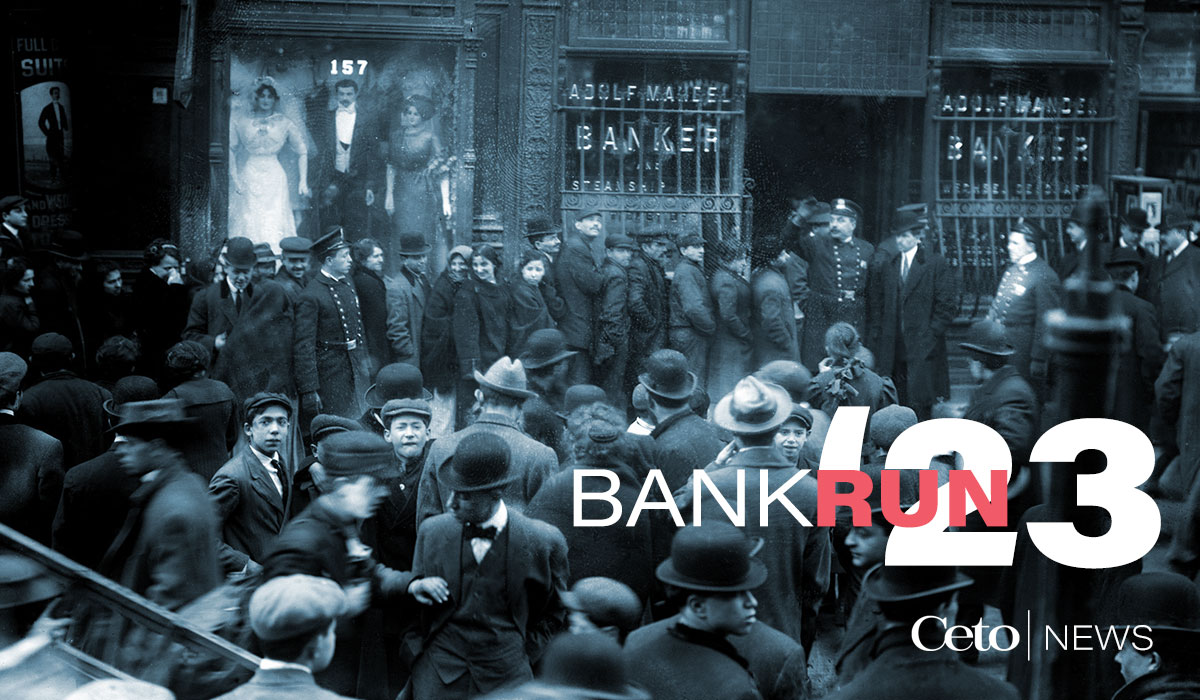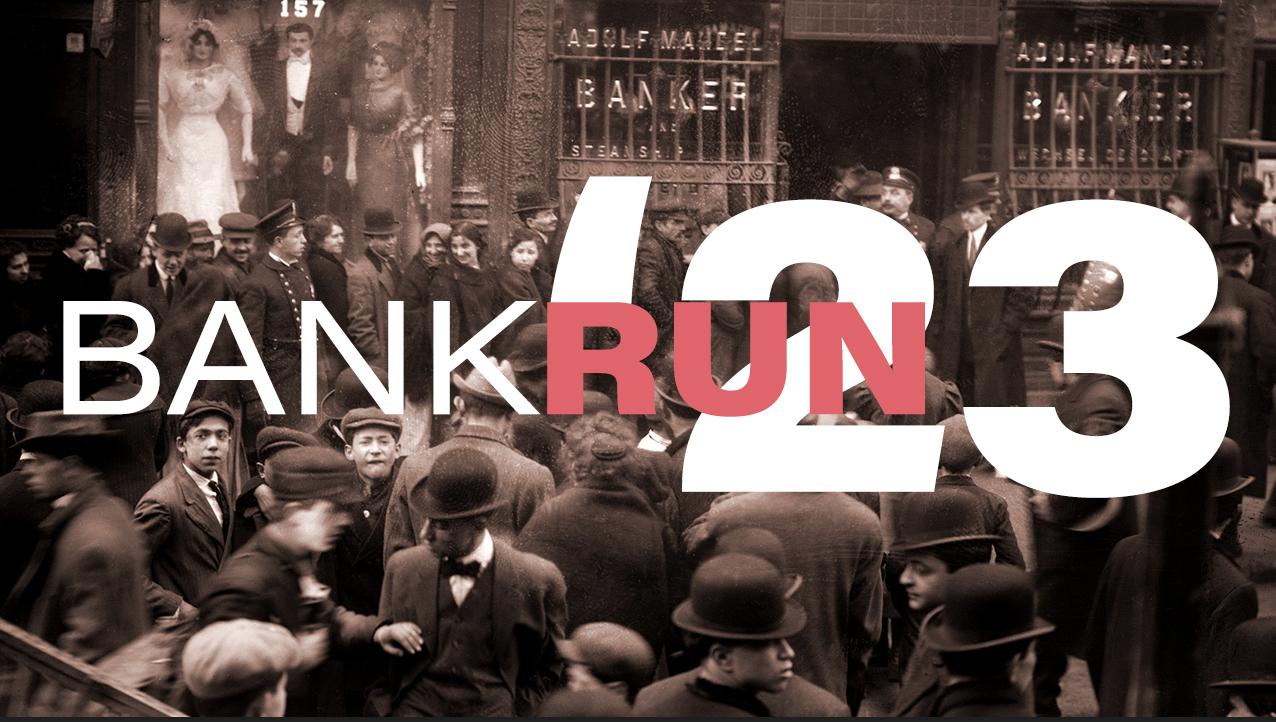-

Silicon Valley Bank, An Internet-Fueled Bank Run.
Posted By Ceto Marketing
An Interview with Tom Ceto
Recently, members of Ceto’s team sat down to interview Tom Ceto, a member of Ceto’s Board of Directors and a middle-market finance expert with more than 30 years of experience in the industry, about the recent happenings at Silicon Valley Bank. Matt Speed, Vice President and Team Lead for Consulting Solutions, took the lead on the interview.

Tom says, “Silicon Valley Bank was the first internet-fueled bank run. There is no other animal like it, it catered to the VC community, and they banked nearly three-quarters of them. Over 88% of their depositors had well over $250k, which is unusual.
When Peter Thiel, a well-known venture capitalist, sent out mass emails and messages to portfolio co’s to pull out funds, Tech Twitter caught word and it began to spread. Depositors began withdrawing all of their available funds.
There was a much better way to handle this. Thiel should have gone to his portfolio companies and suggested they take out their funds and diversify, if possible, to other portfolio companies. A confluence of factors, such as poor asset liability in the bank, rising interest rates in their environment and the internet, played into the bank run. This was a unique situation and is not a systematic failure in the banking system. It’s more so that Silicon Valley Bank had grown dramatically over the last several years due to all that was happening in tech, disproportionately to the industry. They faced the same risk as anyone with concentrated risks.
If everyone pulled their money out of JP Morgan tomorrow, JP Morgan would fail. It’s as simple as that."
Matt Speed: You make a good point, Tom. I agree with you that SVB was unique, especially in their client base, but they aren't unique because many institutions have long-dated investment portfolios that are underwater. Should they be worried about people looking at that? Is there certain hedging they should be doing?
Tom Ceto: I think the problem was that SVB couldn’t hedge like they wanted to because of the rate environment going up. I think that as a result of this there will be further regulation on duration in portfolios and I think that there probably should be. SVB went out and bought 30-year treasuries and had no liquidity. When the interest rates went up, they took a $1.8 billion charge off because they were forced to sell after not managing their assets and liabilities properly.
The impact on banks is twofold. Number one, banks will have to offer higher interest rates on their deposits because they’re competing now with treasuries and other securities that are paying more money.
Two, there will be increased FDIC fees as a result of the failure of SVB and perhaps some other banks. I can’t tell you right now if that’s going to have a big impact or not; however, I do think there will be regulation around duration in portfolios and maybe even average deposit sizes or some sort of diversity in deposits.
Matt Speed: What are your thoughts on available for sale versus held to maturity? Should banks have to mark to market held to-maturity securities?
Tom Ceto: I think that could change. It was a huge failure by the Fed not to recognize what happened. If they had been watching how SVB was managing its assets and liabilities, they would have seen a huge mismatch and a potential problem in liquidity. I think there will be further regulations around this. However, most of this should not affect community banks and credit unions. The fear of contagion is already passing, and many of these banks are up double digits today.
Community banks just need to tell their story: that they are a community bank, many of their depositors are under $250k, they’re not in crypto, not in VCs, and they do not have large deposit concentrations. Emphasizing that their average depositor is the local community person and sharing that they’re in the community to service all of the community’s needs and not a specific market or sector will ease their customers' minds that they have financial stability and conservative lending standards.
The good thing about a lot of these community banks is their average. They don’t have any corporate depositors, and most don’t want any. They service the small mom-and-pop’s in the community and use their accounts as primary checking accounts for inflows and outflows. They keep a couple thousand in the back. For a run to occur at a community bank, it takes a lot more people; however, when you have a concentration like SVB’s concentration with VC, it can happen much more quickly.
Matt Speed: You also mentioned the FDIC. Will there be a large hit to the FDIC insurance fund with the Fed saying they will guarantee the full deposits on both large banks?
Tom Ceto: The short answer is no, but it’s a real concern. You could argue yesterday that the government nationalized banking since all deposits are now protected 100%, or is it still just the $250k? There is a big difference. The risk in guaranteeing all deposits is that banks are not responsible for governing their money well. They aren’t going to be as good of stewards of people’s deposits. While I don’t believe that banks should be covered 100%, maybe the limit does raise from $250k to $500k. Maybe it is $1 million. I hope that, ultimately, the government raises the FDIC-insured limit but doesn’t raise it to 100% because that creates more issues.
At the end of the day, you want your depositors to decide where they are going to put their money. You want them to decide; I want to put my money with ABC Bank because they are my local community, they do a lot of good, they made my auto loan and my mortgage on my house. You want your customer to choose your bank because you are a good bank and will steward their money well and not because they want to chase the highest rate. If the Fed starts guaranteeing all deposits, then customers are just chasing the highest rate and are not looking at the quality of the product.
Think about when you buy a car. If all cars were created equal, you would be price sensitive and look for the lowest cost. But that’s not how it works, right? Cars are not all created equal. Some people will pay more for a BMW because they know it’s a better car, it’s going to last longer and have lower maintenance costs. However, if you start guaranteeing everyone’s deposits, it will be like having the “same quality car,” and depositors will stop looking for the quality or how a bank is run and what it does for their community. Instead, they will only care about what the rate is, and I believe that’s a dangerous area to go. Hopefully, we won’t go there.
Matt Speed: If you were a CEO of a small community bank, what message would you convey to your customers?
Tom Ceto: I would focus on telling our story. We are a community bank that services local communities and are our customer’s primary bank for everything they do. We have conservative lending practices relative to some of these larger banks that tend to be more aggressive and have these leveraged loan portfolios. We are much more conservative in our loans and are very stable.
We have a lot of different deposits, and we won’t have a large concentration of large depositors or lending concentrations in any particular industry.
Community banks are the backbone of many of their communities: they serve the local community and are their customer’s primary bank for everything they do. The money that they have in their banks is the money that is in their community. The community bank is financing your next-door neighbor’s house, your car and your friend’s small business.
It also provides a great opportunity to showcase community banks’ lending practices, which are much more conservative than other banks. While a larger bank is more prone to take risks or specialize in a specific portfolio and depositor concentration, community banks do not do this. They provide a very stable business with lots of depositors.
Community bankers live and work in the communities that they serve. They take local deposits and make local loans, managing their risk. Banking locally provides the customer a sense of stability and peace of mind, knowing that their money stays local and, in their community, is managed by their neighbors who calculate and properly manage the risks daily.
People bank with community banks not because they get the best rates but because of the service and stability.
About Tom Ceto
![Tom Ceto - SVB Draft[44]](https://www.ceto.com/hs-fs/hubfs/Tom%20Ceto%20-%20SVB%20Draft%5B44%5D.jpg?width=251&height=167&name=Tom%20Ceto%20-%20SVB%20Draft%5B44%5D.jpg) Tom serves on the Ceto Board of Directors and began his career at First National Bank, Atlanta, then worked for Nations Bank, Bank of America, and GE Capital. He founded and headed Greyrock/Bank of America Healthcare Capital, Silver Point Capital, and FirstLight Financial. He also led a healthcare advisory team at Banker’s Trust Company, structuring and financing some of the largest healthcare transactions at the time. Most recently, he was responsible for all lending, leveraging, finance, and real estate business for healthcare at Ally Bank. His broad but deep middle-market finance experience spans more than 30 years.
Tom serves on the Ceto Board of Directors and began his career at First National Bank, Atlanta, then worked for Nations Bank, Bank of America, and GE Capital. He founded and headed Greyrock/Bank of America Healthcare Capital, Silver Point Capital, and FirstLight Financial. He also led a healthcare advisory team at Banker’s Trust Company, structuring and financing some of the largest healthcare transactions at the time. Most recently, he was responsible for all lending, leveraging, finance, and real estate business for healthcare at Ally Bank. His broad but deep middle-market finance experience spans more than 30 years.
About Matt Speed
 Matt serves as VP / Team Lead Consulting Solutions. He leads a team of consultants at Ceto that manage projects related to non-Interest Revenue, Vendor Management, and Productivity. With over 20 years of experience in the banking industry, Matt has held leadership positions at community and regional banks, where he worked in branch management, commercial lending, and capital markets.
Matt serves as VP / Team Lead Consulting Solutions. He leads a team of consultants at Ceto that manage projects related to non-Interest Revenue, Vendor Management, and Productivity. With over 20 years of experience in the banking industry, Matt has held leadership positions at community and regional banks, where he worked in branch management, commercial lending, and capital markets.